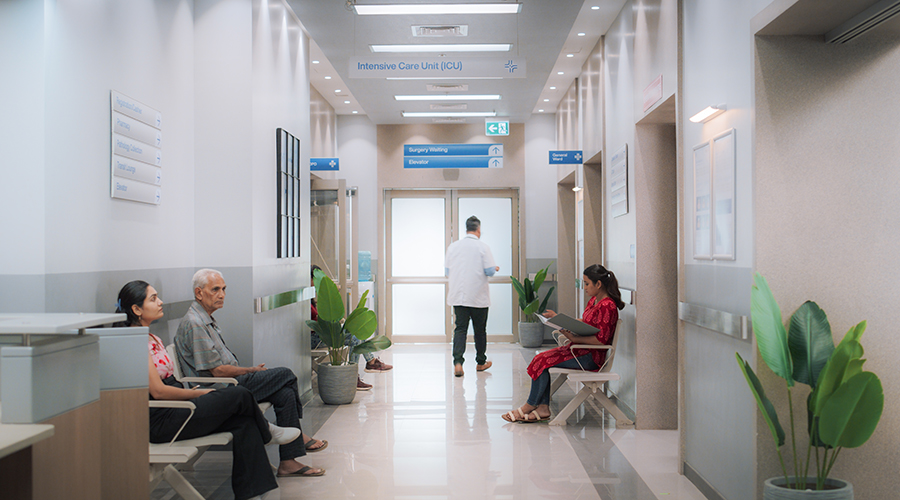All eyes have been on nursing homes as organizations strive to make sweeping changes to improve facilities across the country. Improvements have been progressing slowly, and with that has come poor press.
In August, a 93-year-old woman died after ingesting toxic chemicals mistaken for juice at a California senior living facility. This incident is not the only event that made recent headlines. A veteran's affair nursing home in Arizona was recently evacuated after rats were discovered in the housing area. Coupled with ongoing challenges brought on by the COVID-19 pandemic and lack of funding from the government, senior care facilities are struggling more than ever, compromising the care and wellbeing of residents and staff.
“Nursing homes throughout the country were already facing the hard challenge of fighting against healthcare-associated infections (HAIs) prior to the COVID-19 pandemic,” says Buffy Lloyd-Krejci, author of “Broken: How the Global Pandemic Uncovered a Nursing Home System in Need of Repair and the Heroic Staff Fighting for Change.” “Over the past two years, facilities already combating HAIs also were tasked with implementing extended-use protocols for personal protection equipment (PPE), creating quarantine/isolation units at a moment's notice, keeping visitors from meeting with loved ones in-person, and trying to retain the troves of staff members leaving the industry due to low wages and burnout. The pandemic demonstrated how unprepared many nursing homes were for an event of this nature. The disrupted supply chains, ever-changing COVID-19 federal guidelines and lack of staffing made this a recipe for disaster. The result of losing the lives of nursing home residents and staff members made the past two years an unfortunate and unforgettable learning experience.”
Prior to the pandemic, nursing homes were already fighting HAIs. An estimated 1-3 million serious infections and 380,000 annual deaths have been reported in nursing homes before COVID-19 was identified, according to U.S. Department of Health and Human Services.
Related Content: Top Areas to Keep Clean in Senior Care Facilities
The public expects nursing homes to thrive for the safety of residents and the employees that tend to them. Healthcare facilities should evaluate current regulatory processes that continue to create lasting change. Throughout the early days of lockdown, nursing home regulations were deemed as nitpicky despite that at a vulnerable time, staff members were out sick, there was limited PPE and changing guidelines. Surveyors were quick to point out flaws in infection control, but no system was perfect.
“There isn’t one healthcare setting that did everything perfect during the pandemic and nursing homes were the most severely punished,” Lloyd-Krejci says. “The first thing a nursing home should consider is developing a culture of infection prevention and control within their facility. It is not merely a few individuals’ responsibilities, i.e., the infection preventionist and the director of nursing. Ensuring that all staff members have a firm understanding of basic infection prevention practices such as hand hygiene and transmission-based precaution compliance will help decrease the risk of cross-contamination and infection. We must also pay special attention to areas that are often forgotten when it comes to IPC training such as environmental services (EVS), laundry and food service.”
With the lack of support, some have begun to believe that senior care facilities are set up to fail. Lloyd-Krejci says that over 60 percent of nursing home residents receive Medicaid payments. For residents on this program living in a long-term care facility, the nursing home gets on average $200 a day. This amount is not adequate, especially during the pandemic when private rooms were necessary to mitigate the spread of COVID-19.
Earlier this year, President Biden announced plans to improve the quality of the nation’s nursing homes so all residents receive reliable, high-quality care. The reform aimed to improve the safety and quality of nursing home care, holding nursing homes accountable for the care they provide and making the quality of care and facility ownership more transparent for potential residents and their families. But the proposed increase in funding for health and safety inspections increases costs in civil monetary penalties for nursing homes.
“Nursing home staff are underpaid, understaffed, and in many cases undertrained on proper infection prevention procedures,” Lloyd-Krejci says. “How can we expect staff members to perform under these conditions? Let’s imagine that a well-educated nurse who was at the top of their graduating class comes to work in a nursing home. Or a certified nursing assistant. They are required to care for 18 residents on their shift. Is it even possible, no matter how good of a worker you are to provide each and every resident with the best care? No. We need to move to a model of lower resident to staff ratios, something the Biden Administration is calling for. But I am not ignorant to the fact that we can’t simply create regulations such as improving staffing ratios and expect the nursing homes to be successful. They need support. They need time to recruit staff and have increased Medicare and Medicaid reimbursement to support this change.”
Mackenna Moralez is the associate editor for the facility market.

 Turning Facility Data Into ROI: Where Healthcare Leaders Should Start
Turning Facility Data Into ROI: Where Healthcare Leaders Should Start Sutter Health Breaks Ground on Advanced Cancer Center and Care Complex
Sutter Health Breaks Ground on Advanced Cancer Center and Care Complex Imperial Beach Community Clinic Caught Up in Email Cyberattack
Imperial Beach Community Clinic Caught Up in Email Cyberattack Social Media Driving Rise in Trade Jobs
Social Media Driving Rise in Trade Jobs North Carolina Children's Receives $25M Gift from Coca-Cola Consolidated
North Carolina Children's Receives $25M Gift from Coca-Cola Consolidated